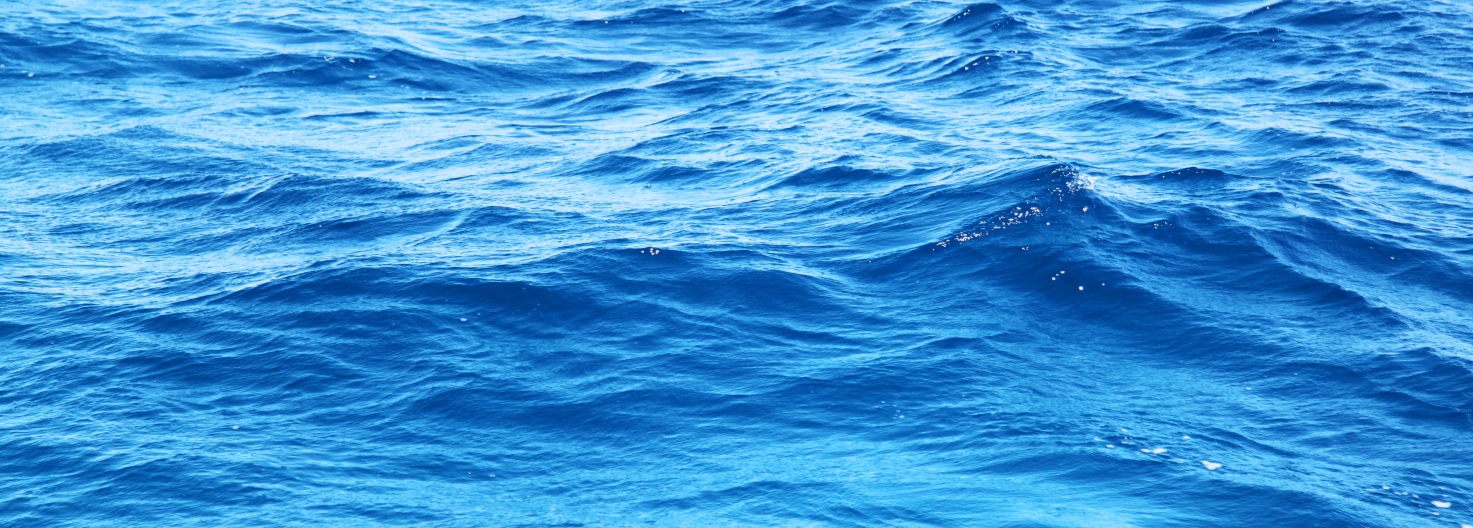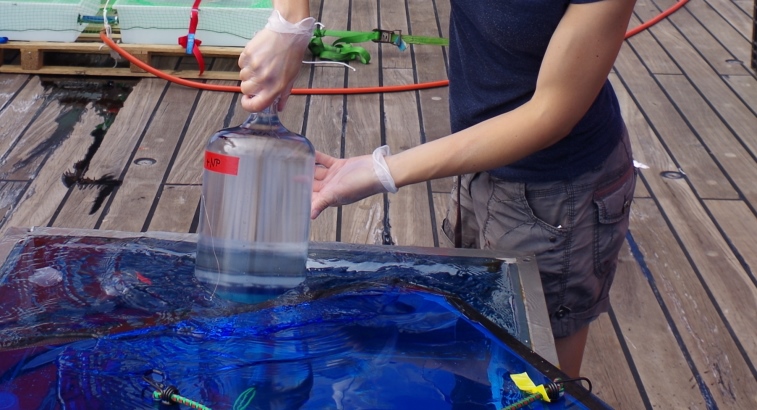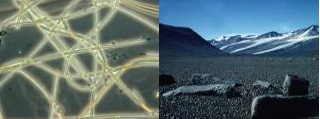
Small bug, large impact: A new key player in the marine nitrogen cycle
A study published in Nature Microbiology shows for the first time that a small nitrogen-fixing symbiosis contributes extensively to the total nitrogen fixation in the tropical North Atlantic. Nitrogen fixation is the largest source of nitrogen to the open ocean, and this symbiosis is thus a key player in the marine nitrogen cycle.
Nitrogen is essential to all forms of life: It is part of proteins, nucleic acids and other cellular structures.
However, many oceanic regions are limited by the availability of nitrogen, such as the tropical North Atlantic. In this region, nitrogen supply to the open ocean comes mainly from nitrogen fixation and to a lesser extent from atmospheric deposition.
Nitrogen fixation is the transformation of the inert nitrogen gas from the atmosphere into other forms of nitrogen, which can then be taken up by other microorganisms such as primary producers. The organisms performing nitrogen fixation are called nitrogen fixers or diazotrophs. They can be considered the fertilizers of the large areas of the nutrient-limited oceans.
Thus, it is crucial to determine the factors and key players of nitrogen fixation in order to understand how global changes might impact nitrogen fixation in the future and the possible resulting impacts on the ocean’s productivity.
Never determined before
Together with colleagues, Carolin Löscher and Julie LaRoche from Nordic Center for Earth Evolution, University of Southern Denmark, have now assessed the contribution of one of the most abundant diazotrophs (UCYN-A) in the ocean to total nitrogen fixation in the tropical North Atlantic.
The colleagues are from the Max Planck Institute for Marine Microbiology in Bremen (MPI Bremen), the University of Kiel, and the GEOMAR in Kiel. Lead author is Clara Martínez-Pérez, MPI Bremen.
Despite its relatively high abundance compared to other diazotrophs, the activity and contribution of this small diazotroph, living in symbiosis with a small unicellular alga, has never been determined before. Their surprising results show that previous knowledge about the key players in nitrogen fixation might have to be revised.
The small symbiosis of UCYN-A with a unicellular alga looks inconspicuous, but it seems to be a key player in the marine nitrogen cycle. The UCYN-A-cell is shown in green, the alga in orange (chloroplasts) and blue (nucleus).

A new player in the nitrogen cycle
The tropical North Atlantic, harboring about one quarter of global nitrogen fixation, has previously been believed to be dominated by Trichodesmium, a filamentous cyanobacterium blooming in such large numbers that it can be seen with the naked eye and by satellites.
- However, there are many other diazotrophs in the ocean whose importance had not yet been quantified, Clara Martínez-Pérez explains.
To quantify the importance of UCYN-A, the scientists used several methods including a NanoSIMS, which allows for the detection and quantification of the activity of individual cells.
- By this, we can quantify the ecological role of UCYN-A in the marine nitrogen cycle, which is essential information for global models of nutrient cycling, says co-author Wiebke Mohr from the MPI Bremen.
Up for a surprise
Their results were up for a surprise: Martínez-Pérez and her colleagues show that UCYN-A is as important for nitrogen fixation in the tropical North Atlantic as is Trichodesmium.
- Although Trichodesmium cells were very numerous, they were not fixing much nitrogen gas, says Martínez-Pérez.
In contrast, the much smaller UCYN-A was very active. Living in association with a small alga also means that UCYN-A not only fixes nitrogen for itself but also the host alga. As a result, it contributed as much as Trichodesmium to the total nitrogen fixation across the tropical North Atlantic.
Oceanic cosmopolitans
The scientists further explored the global distribution of UCYN-A. They are found all over the oceans from the Arctic to the Antarctic circles (which is not the case for Trichodesmium which is usually in waters above 20 °C).
- Thus, UCYN-A has the potential to be one of the main contributors to nitrogen fixation not just in the tropics but around the globe, says Martínez-Pérez.
It is interesting to note that, despite their activity and ecological relevance, the abundance of these symbioses is very low compared to other microorganisms in the oceans.
- One of the major challenges when quantifying these organisms was to actually find them under the microscope, since they are so rare, explains Mohr.
Consumed by grazers
The low abundance of these organisms implies that they are rapidly consumed by grazers or otherwise removed from the surface waters. This would result in a very efficient transfer of the fixed nitrogen to the oceanic food web, and suggests that the contribution of UCYN-A to nitrogen fixation is even higher than quantified here.
- Next, we would like to look into other regions of the ocean and quantify the abundance and activity of UCYN-A there. This will allow for deeper insights into their global role, concludes Martínez-Pérez.
NordCEE

Nordic Center for Earth Evolution is focused on exploring the long history of life's evolution on Earth.